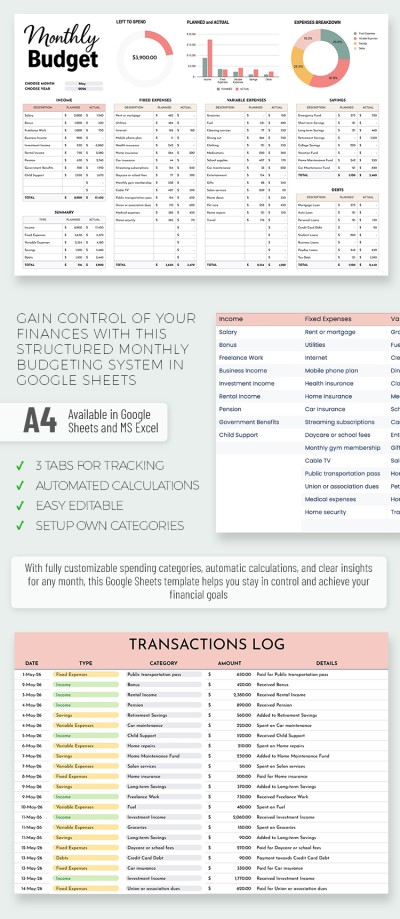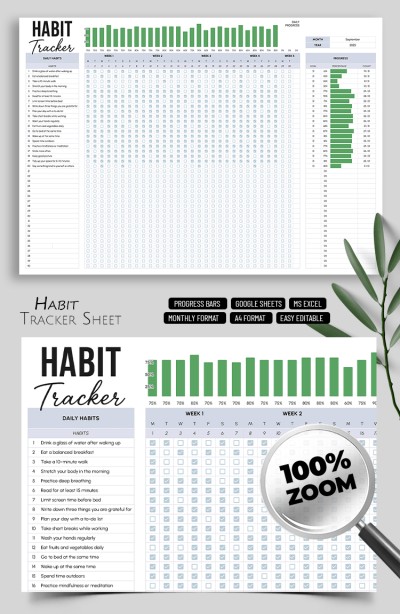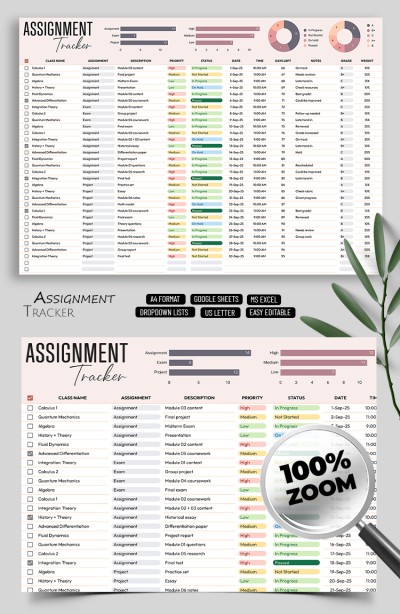How to Check Edit History on Google Docs?
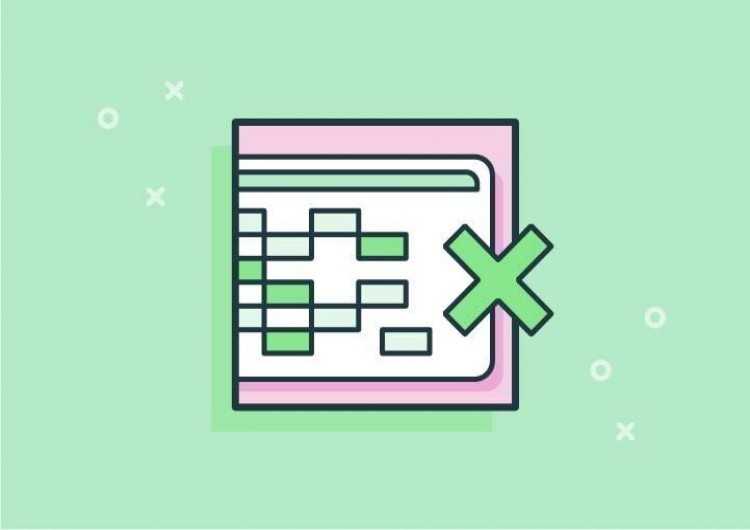
“Hey, who did that?” – How often would you exclaim that at home or the office? Familiar situation?
Just imagine, you worked a whole night on the collab project and the next day a whole page is missing. What’s going on? Now take a deep breath and relax, as this simple editor will help you track who and when changed the project.
The Editing history allows you to see the changes that were applied to a document, who made them, and when they were made. In this tutorial, we'll walk you through the steps of accessing, understanding, and using the editing history feature. Whether you're a beginner or a seasoned user, this guide will help you make the most of this valuable tool.
Accessing the Editing History
Accessing the editing history in Google Docs is a simple process. Just follow these steps:
1. Start by opening the document you want to check the editing history for. To do that, go to your Google Drive and find a necessary document.
For this tutorial, we created a random document, where we made several revisions to show you the overall picture.
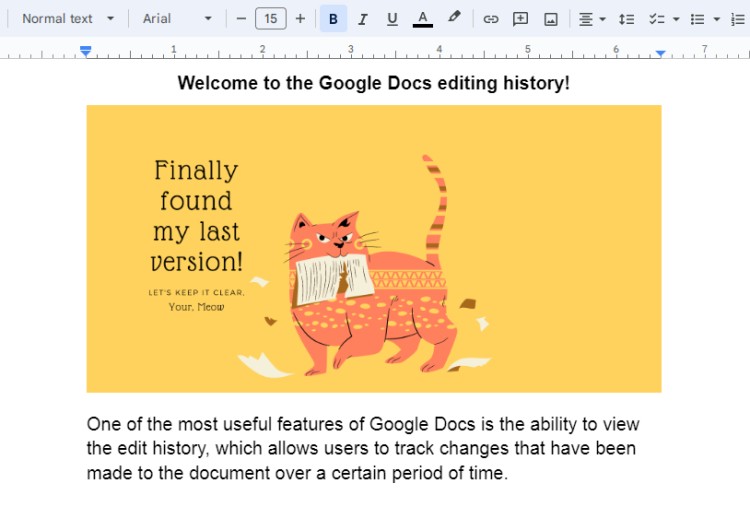
2. Now go to the File menu in the top left corner of the document.
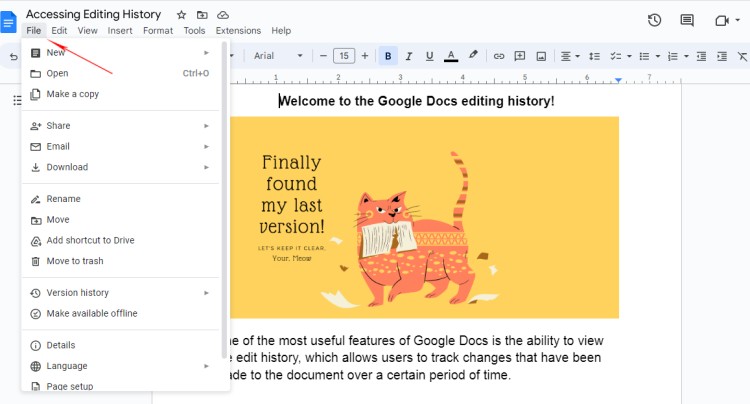
3. Next, in the dropdown menu, choose Version history.
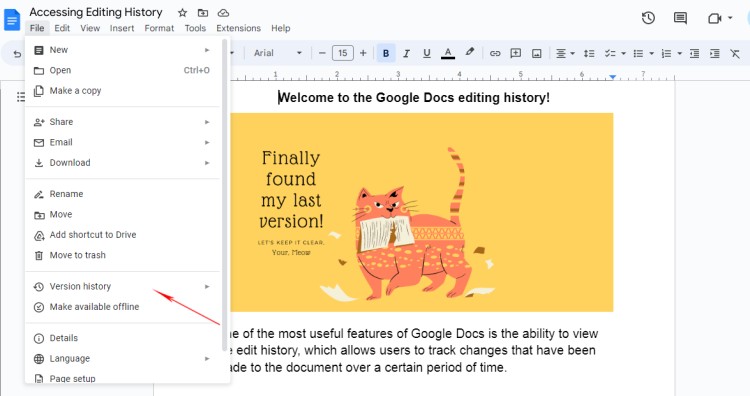
4. Finally click See version history.
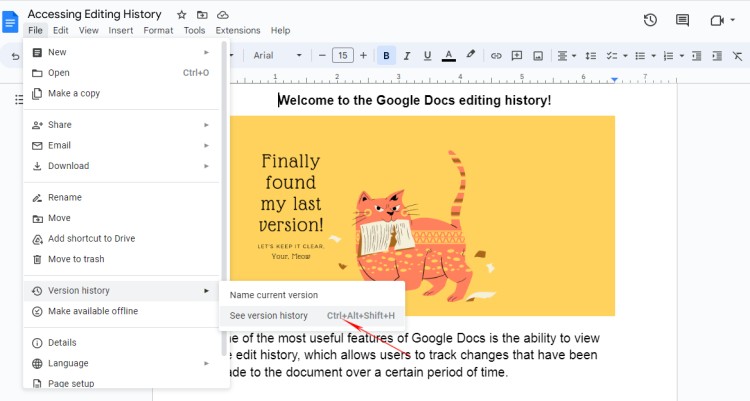
If the above method doesn't work, there is one more option to access the editing history. Simply use the keyboard shortcut Ctrl+Alt+Shift+H on a PC or Command+Option+Shift+H on a Mac. Alternatively, you can click on the All changes saved in Drive button at the top of the screen while a document is open (depending on the PC update).
Overview of the Editing History Interface
Now that you know how to access the history, let’s take a look at the editing interface and benchmarks and how they can help us.
When you access the editing history for a document, you'll see a panel with a list of versions located on the right side of your screen. Each version has a date and time stamp and shows who was the last to make changes to the document. You can click on any version to see what changes were made.
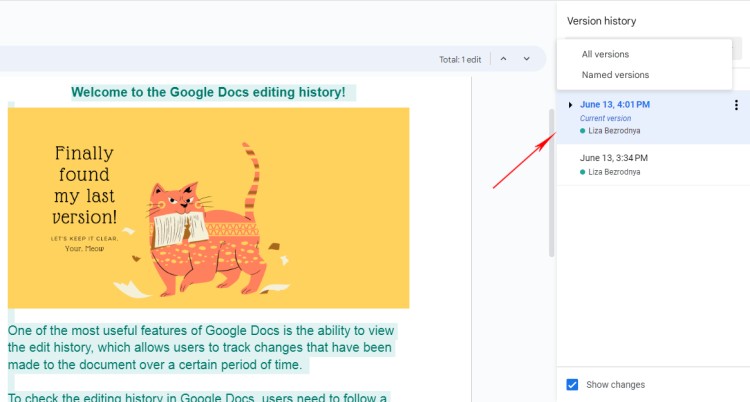
Google Docs uses different colors and labels to help you quickly understand what changes were made. Deletions are shown in red with a strikethrough, while additions are shown in green. If the text was moved to a new location, it is highlighted in blue. You can also see comments and suggestions made by other users.
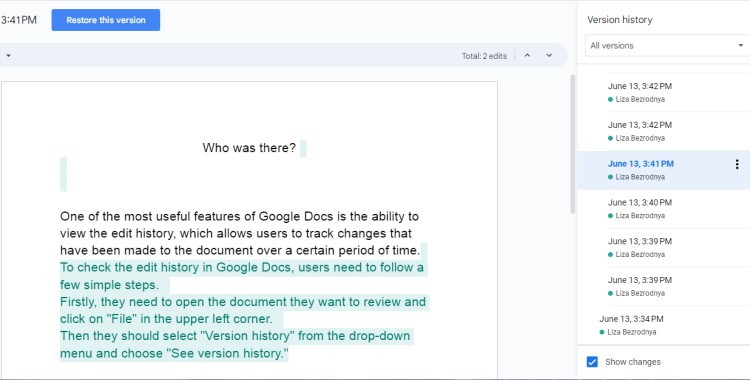
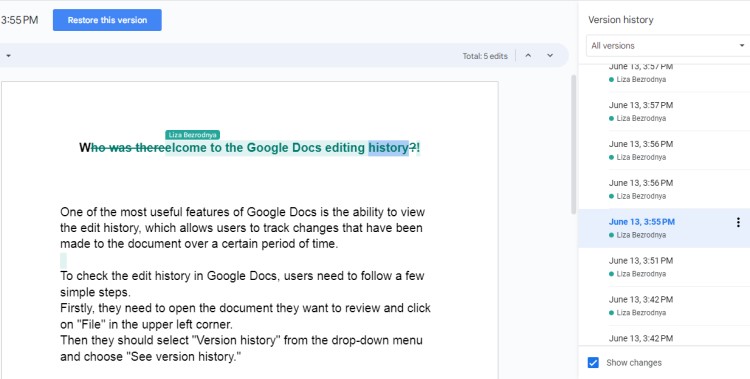
If you want to zoom in on a specific change of the sentence, simply click on it. Editor will highlight the change and show you the revision history for that particular section. This makes it easy to see exactly what was changed and when.
Restoring Previous Versions of a Document
Hey, sometimes we apply changes to the document (especially, when it is a big one) and later we realize it was a mistake and we need to get it back. But let’s not worry, as Google Docs has a feature that allows restoring any previous versions of a document.
Thus, if you need to return the previous version, then check these simple steps:
1. Go to Google Drive and open the document you want to restore. Do the first step we described above.
2. Then choose File menu, then select Version history, and choose See version history.
3. At the right side of your screen you will see a list of all previous versions of the document. Click on the version you want to restore.
4. Choose Restore this version to revert the document back to the version you want to keep.
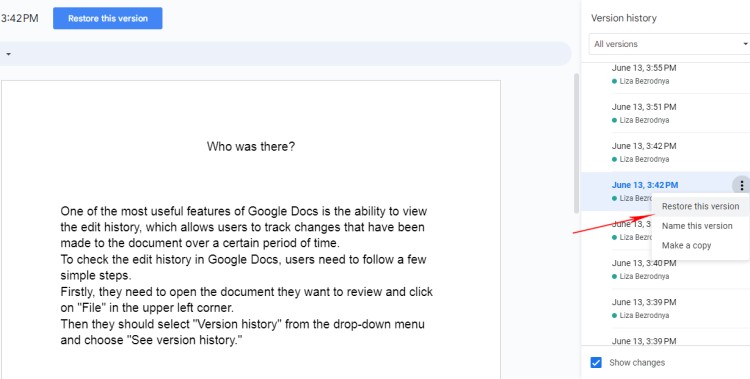
Friendly tip: It's important to note that restoring a previous version of a document will overwrite any changes you've made since that version was saved. Any edits you made to the document between the previous version and the current version will be lost. Make sure you save your work before restoring a previous version.
FAQ
Here we gathered some common questions about using editing history in Google Docs.
Q: Can I see a list of who made each specific change in a document?
A: Yes, you can access the editing history to see who made each change and when it was made.
Q: Can I undo changes made by another collaborator?
A: Yes, you can use the editing history to revert the document back to a previous version, which will undo any changes made since that version was saved.
Q: Can I delete editing history in Google Docs?
A: No, editing history cannot be deleted in Google Docs. However, you can make a copy of the document and delete the editing history from there.
Q: Can I see deleted text using editing history in Google Docs?
A: Yes, you can see deleted text using editing history in Google Docs. Simply choose the version of the document that you want to view, and you will be able to see all the changes made to the document, including deleted text.
Q: Is there a limit to the number of versions of a document that can be saved using editing history?
A: No, there is no limit to the number of versions of a document that can be saved using editing history. However, it's important to note that older versions of the document may be automatically deleted after a certain period of time, depending on your Google Drive settings.
Tips and Tricks for Using Editing History More Effectively
Now you are almost a superhero since you know how to restore your lost information. And with the following tips you are going to upgrade your skills and rule the Google Docs multiverse.

1. Save the document frequently to ensure everyone has access to the most up-to-date version.
2. Communicate any changes you make to the group to avoid editing conflicts.
3. Use the editing history to resolve conflicts and decide which changes to keep.
4. When restoring a previous version of a document, make sure you save your work beforehand to avoid losing any recent changes.
In conclusion, Google Docs editing history is an essential feature that can help you keep track of all the changes made to your documents. Remember to use the best practices mentioned in this guide to avoid confusion, streamline your workflow, and collaborate more effectively with others.
Hope you liked it! Good luck!

We are a team of creative people who dream of sharing knowledge and making your work and study easier. Our team of professional designers prepares unique free templates. We create handy template descriptions for you to help you choose the most suitable one. On our blog, you'll find step-by-step tutorials on how to use Google Products. And our YouTube channel will show you all the ins and outs of Google products with examples.





